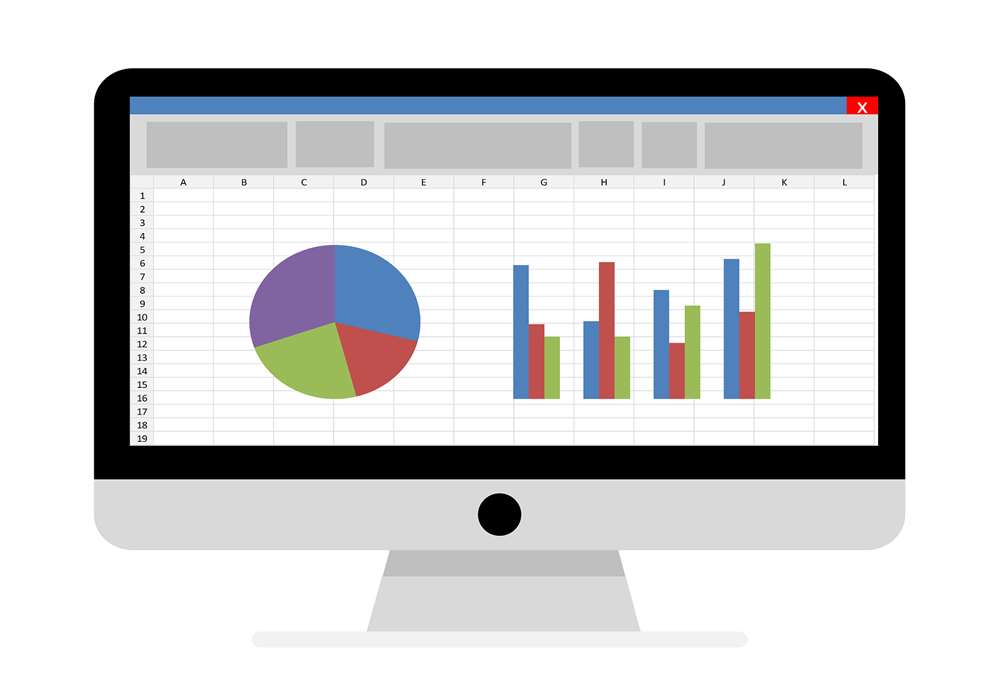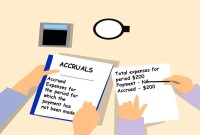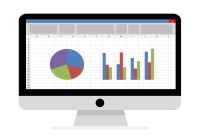- Home
- Business Processes
- Industry Knowledge
- Aerospace Industry
- Automotive Industry
- Banking Domain
- BFSI Industry
- Consumer/ FMCG Industry
- Chemicals Industry
- Engineering & Construction
- Energy Industry
- Education Domain
- Finance Domain
- Hospitality Domain
- Healthcare Industry
- Insurance Domain
- Retail Industry
- Travel and Tourism Domain
- Telecom Industry
- Leadership Skills
- eLearning
- Home
- Business Processes
- General Ledger (Record to Report)
- General Ledger Overview
General Ledger Overview
What Is a General Ledger? General Ledger (also known in accounting as the GL or the Nominal Ledger) is at the heart of any accounting system. A general ledger is the master set of accounts that summarize all transactions occurring within an entity. Ledger is the skillful grouping and presentation of the Journal entries. Learn the accounting fundamentals, general ledger process, and general ledger flow.
What is accounting?
Accounting is a process designed to capture the economic impact of everyday transactions. Each day, many events and activities occur in an entity, these events and activities are in the normal course of business; however, each of these events may or may not have an economic impact. Events or activities that have an effect on the accounting equation are accounting events. The accounting equation is the basis for all accounting systems. Nowadays most of the accounting is automated using sub-ledger and general ledger systems.
The Accounting Process:
The accounting process enables the accounting system to capture accounting data and provide the necessary information to business stakeholders. Given below are the five steps in the accounting process:
- Step1: Identifying Business Stakeholders
- Step2: Understanding Accounting Needs
- Step3: Identifying Accounting Transactions
- Step4: Recording Transactions
- Step5: Preparing Accounting Reports
Generally Accepted Accounting Principles (GAAP):
Generally Accepted Accounting Principles define the accounting procedures, and understanding them is essential to producing accurate and meaningful records. Given below are the fundamental accounting principles:
- GAAP1: The Business Entity Principle
- GAAP2: The Cost Principle
- GAAP3: The Objectivity Principle
- GAAP4: The Unit of Measure Principle
- GAAP5: The Going-Concern Principle
Accounting Systems: Single Entry and Double Entry:
There are two common systems of bookkeeping single entry and double-entry accounting systems. The first – single entry – is simplistic, recording each transaction only once, either as revenue or as an expense. Double-entry bookkeeping has become the standard, and is the preferred way of accounting, as it allows businesses to track both the sources and application of money.
Accounting Methods: Cash V/s Accrual:
Two types of accounting methods are commonly used to record business transactions know as cash accounting and accrual accounting. Under the cash accounting method, revenue is recognized and recorded when the cash is received and expenses are recognized and recorded when the cash payments are made. Under the accrual method of accounting, revenue and expenses are recognized and recorded, when the product or service is actually sold to customers or received from suppliers, generally before they're paid for.
The Accounting Equation:
The following equation shows the relationship among assets, liabilities, and owner’s equity:
- Assets = Liabilities + Owner’s Equity
- Assets = Liabilities + Owner’s Equity + Revenues - Expenses
What do we mean by Journalizing?
Using the rules of debit and credit, transactions are initially entered in a record called a journal. In this way, the journal serves as a record of when transactions occurred and were recorded. The process of recording a transaction in the journal is called journalizing. The entry in the journal is called a journal entry.
What is General Ledger?
Transactions are first recorded in the general journal and then transferred, or posted, to the ledger, which stores all the charts of accounts of a business. An account is defined as an accounting record that reflects the increases and decreases in a single asset, liability, or owner's equity item (The Accounting Equation!!). In addition, the ledger shows the balance of each account that helps the user understand the final effects of the transactions.
While journals present a chronological listing of a company's daily transactions, ledgers are organized by account. As a result, financial statements such as Balance Sheets and Income Statements can only be generated from the general ledger not directly from the journals.
Automated General Ledgers
In order for people inside and outside an organization to use financial data, transaction information is organized by the account in ledgers. A general ledger is the main accounting record of a business. Originally a paper document, a ledger is now more likely to be an electronic document containing summarized financial data and balances for all the accounts of an organization.
In automated systems like ERPs, General Ledger is the central repository for all transactions that get recorded in various supplemental books, which are known as modules or sub-ledgers. Examples of supplemental books in traditional accounting are sales books for sales, purchase books for purchases, cash and bank book for cash related transactions and general journals book to capture adjustment entries. In “Automated Accounting Packages” these supplemental transactions are recorded in modules like Accounts Payables, Accounts Receivables, Purchase, or Inventory.
Accounting Cycle:
Accounting Cycle is the collective and repetitive process of recording and processing the accounting events of a company in different accounting periods. The series of steps begin when a business transaction occurs and end with the period closure where the cycle is again repeated. The steps in the accounting cycle are:
- Step1: Identifying Business Stakeholders
- Step2: Understanding Accounting Needs
- Step3: Identifying Accounting Transactions
- Step4: Recording Transactions
- Step5: Preparing Accounting Reports
General Ledger Process Flow:
GL process flow is a five-step process from recording the transactions in the system to finally running the reports containing financial data out of the system. The input for GL Process Flow is the raw accounting data and the output is the accounting reports that can be used to provide various levels of financial information. The steps in the general ledger process flow are:
- Step1. Create Journal or Import Journal from Sub‐Ledger
- Step2: Review Journals
- Step3: Approve Journals
- Step4: Journals Posting
- Step5: Run Financial Reports
Drilldown from General Ledger to Upstream Systems:
In the advances general ledger systems, users can drill down to sub-ledgers details from General Ledger and can get all of the transaction details that comprise an account balance, regardless of which sub-ledger originated the transaction. This functionality helps in analyzing any account balance by understanding the source of the transaction and viewing additional information that has been captured in the source system and not imported into the general ledger system.
Related Links
You May Also Like
-
Period End Accruals, Receipt Accruals, Paid Time-Off Accruals, AP Accruals, Revenue Based Cost Accruals, Perpetual Accruals, Inventory Accruals, Accruals Write Off, PO Receipt Accrual, Cost Accrual, etc. are some of the most complex and generally misconstrued terms in the context of general ledger accounting. In this article, we will explore what is the concept of accrual and how it impacts general ledger accounting.
-
In this article, we will describe how to determine if an account needs adjustment entries due to the application of the matching concept. Learners will get a thorough understanding of the adjustment process and the nature of the adjustment entries. We will discuss the four types of adjustments resulting from unearned revenue, prepaid expenses, accrued expenses, and accrued revenue.
-
GL - Review & Approve Journals
Review and Approval mechanisms ensure that the accounting transaction is reasonable, necessary, and comply with applicable policies. Understand why we need review and approval processes, what are they, and how they are performed in automated general ledger systems. Learn the benefits of having journal approval mechanisms in place.
-
After reading this article the learner should be able to understand the meaning of intercompany and different types of intercompany transactions that can occur. Understand why intercompany transactions are addressed when preparing consolidated financial statements, differentiate between upstream and downstream intercompany transactions, and understand the concept of intercompany reconciliations.
-
The general ledger is the central repository of all accounting information in an automated accounting world. Summarized data from various sub-ledgers are posted to GL that eventually helps in the creation of financial reports. Read more to understand the role and benefits of an effective general ledger system in automated accounting systems and ERPs.
-
Legal Structures in Businesses
Businesses not only vary in size and industry but also in their ownership. Most businesses evolve from being owned by just one person to a small group of people and eventually being managed by a large numbers of shareholders. Different ownership structures overlap with different legal forms that a business can take. A business’s legal and ownership structure determines many of its legal responsibilities.
-
Generally Accepted Accounting Principles define the accounting procedures, and understanding them is essential to producing accurate and meaningful records. In this article we emphasize on accounting principles and concepts so that the learner can understand the “why” of accounting which will help you gain an understanding of the full significance of accounting.
-
In this article we will focus on and understand the accounting process which enables the accounting system to provide the necessary information to business stakeholders. We will deep dive into each of the steps of accounting and will understand how to identify accounting transactions and the process for recording accounting information and transactions.
-
What Is a General Ledger? General Ledger (also known in accounting as the GL or the Nominal Ledger) is at the heart of any accounting system. A general ledger is the master set of accounts that summarize all transactions occurring within an entity. Ledger is the skillful grouping and presentation of the Journal entries. Learn the accounting fundamentals, general ledger process, and general ledger flow.
-
Global Business Services (GBS) Model
Global business services (GBS) is an integrated, scalable, and mature version of the shared services model. Global Business Services Model is a result of shared services maturing and evolving on a global scale. It is represented by the growth and maturity of the Shared services to better service the global corporations they support.
Explore Our Free Training Articles or
Sign Up to Start With Our eLearning Courses

About Us
Learning
© 2023 TechnoFunc, All Rights Reserved










